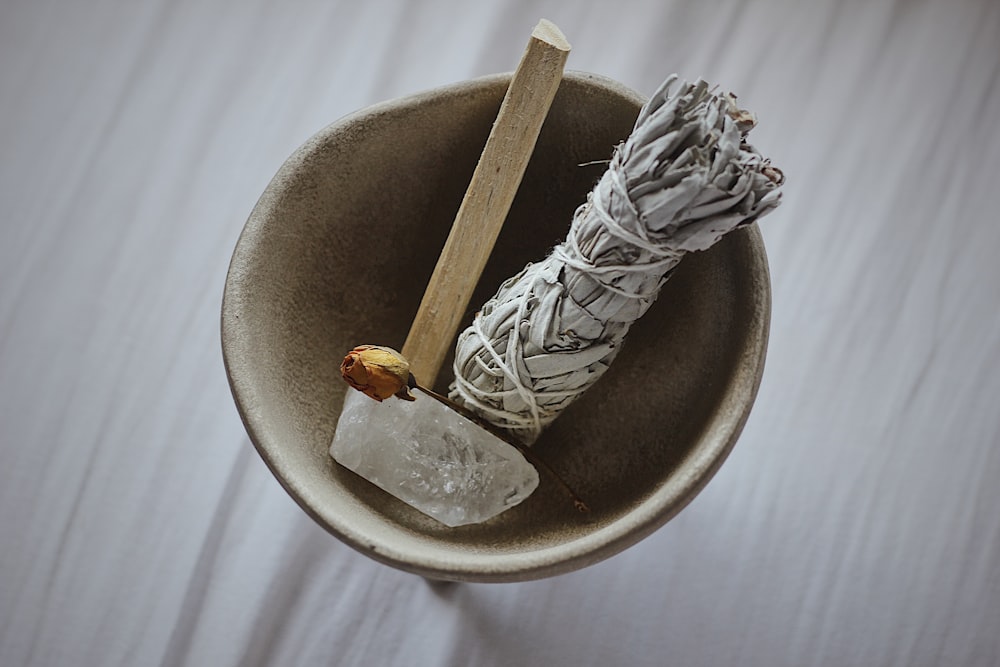
The act of burning sage, also referred to as smudging, has deep historical roots. You can trace this ritual back its origins in Roman, Greek, and Egyptian ancient medicine, as healers used sage to treat patients. Smudging is also a spiritual practice that’s imbibed in the healing traditions of most Native American tribes like the Cahuilla, Lakota, and Chumash.
Apart from medicinal purposes, these indigenous groups also burn sage as a part of their spiritual ceremonies. For example, shamans or faith healers use it to pray and reflect upon spiritual dilemmas. It is believed that burning sage can cleanse a space of negative energy, and purify the surroundings or even cleanse the energy of the people within the vicinity.
Since time immemorial, sage was burned for spiritual and physical healing, protecting against harm, boosting defense against diseases, and even increasing one’s wisdom. Burning sage is akin to a diffuser of the olden times, so that the ancient civilizations could enjoy aromatherapy. Today, smudging has regained its popularity because of its many benefits from improving air quality to alleviating stress. (Sage does have purifying and detoxifying properties.)
Don’t be surprised if you see your neighbour burning sage in their apartment to improve their overall well-being, or diffusing the sage essential oil to enjoy the calming scent. Learn more about burning sage and how this spiritual practice can elevate your life:
What is Sage?
Sage is a very aromatic plant that has long played a role in both natural medicine and food consumption. As noted above, sage was burned in the past and is still being burnt in these modern times for its many healing and cleansing properties. Most foodies will recognize this as a fragrant herb used for stuffing and marinades to make meats more flavorful. Today, you can also purchase sage supplements because they contain tons of vitamins and antioxidants for boosting immunity and helping mitigate the onset of certain diseases.
Notably, the ancient Romans dubbed sage as “salvare” or a salvation plant that’s meant to save and cure because it has natural healing properties. In fact, the term is closely associated with the scientific term of sage which is Salvia officinalis. The most common variants of sage include:
- White sage
- Prairie sage
- Spanish sage
- Chinese sage

Why Do People Burn Sage?
Smudging involves burning sage leaves in your home, and allowing the smoke to permeate your home to cleanse negative energy. According to Rosalyn a Pier, Ph.D., and multi-awarded ethnobotanist and indigenous writer, smudging is a process that entails burning dried plants and then using the smoke to cleanse themselves, objects, or places. The plant is burnt over hot coals and placed on the ground or a large vessel. A person then places their hands over the smoke to capture it and “washes” their entire body with the smoke.
Although sage is a famous spice that you can take orally with food or as a supplement for its antioxidant effects, burning sage in today’s modern era is seen as a trendy stress-reliever that can improve mental health. Some use it to enhance their meditation experience. The scent of sage is said to have a calming effect, helping you alleviate stress. This is important since many research studies assert that stress is at the root of many chronic diseases.
Benefits of Burning Sage
The spiritual and mental benefits of burning sage are debated between believers and non-believers. However, today, many people also burn sage simply to improve indoor air quality. It is a cost-efficient way to purify the atmosphere and breathe fresher air. Bear in mind that poor air quality and environmental toxins may be linked to many health problems. For this reason, many individuals turn to sage because studies indicate that this herb has antimicrobial properties. This means sage can potentially kill bacteria, fungi, and viruses.
Those who practice alternative medicine also believe that sage has curative properties because it addresses the root cause by targeting negative energy, clearing out pathogens, and eliminating spiritual impurities.
Other benefits of burning sage include the following:
- Sage can repel many types of insects
- Neutralize allergens like pet dander, pollutants, pollen, or molds
- Enhance intuition with its mild psychoactive properties
- Dispel negative energy from others, past trauma, or bad experiences
- Cleanse specific objects to give you peace of mind
- Lift the spirits to improve mood and calm the nerves to relieve anxiety
- Activate certain receptors to alleviate pain
- Improve sleep quality
- Strengthen memory and focus
- Help energize and dispel fatigue

Is Sage Safe?
Sage has been approved by the US FDA as a seasoning or spice. This product is seen as generally safe for human consumption, so burning it poses no harm. However, bear in mind that burning sage carries a risk because you’re using fire. You must handle it correctly to avoid burns and keep it away from other flammable materials. Moreover, smudging will create a lot of smoke which can result in problems or flare-ups for people who are asthmatic or suffer from other respiratory issues.
Although burning sage can cleanse the air of allergens and pollutants for people with asthma, bronchitis, or allergies, inhaling the smoke itself during the smudging process could be harmful to those who are at risk. It can aggravate any respiratory condition, so proceed with caution. It would be best for asthmatics or other immunocompromised individuals to wait for the smoke to clear before going back into the home.
How Do You Smudge Your Home by Burning Sage?
To get started, you need quality dried sage which you can purchase online (such as a Sage kit on Amazon) or in a health store in bundles or sticks. Alternatively, you can grow your own sage plant and then dry the leaves for burning. Old-time proponents of smudging assert that intentions matter, so before you light up the fire, meditate, internalize and set your goals.
It’s crucial to focus on your intentions and goals before burning sage, and repeat affirmations while burning sage that align with those goals.
It would be best to clear the space you’re smudging from pets and small children. Moreover, it is vital to open a window before, during, and after to give the smoke a path to escape. Shamans believe that as the smoke breaks free, it will also take away impurities and negative energy along with it. Here’s what you need to do to sage your apartment:
- Prepare your dried sage
- Use a sage burner, incense tray, or fire-proof ceramic bowl
- Fill the vessel with sand to catch the ashes
- Keep a fire extinguisher or water on standby in case of an emergency
- Light the sage and let it burn for a few seconds
- Gently blow on it to move the smoke and allow it to permeate the room
- Hold the burner and walk into each room or object you wish to purify
Burning sage has a long history and is fairly simple to do on your own. Whether you want to improve indoor air quality, aspire for healing, jump-start positive changes, or do something spiritual, you can give smudging a chance. After all, it’s always fun to try something new, and burning something as safe as sage has no adverse side effects.
However, if you’re dealing with deeper mental issues like Seasonal Affective Disorder, clinical anxiety, or depression, burning sage alone will not suffice. Although engaging in complementary health treatments like smudging can help, relying on it solely may have adviser results. It is vital to consult your physician to advise proper treatment. You can also improve your stress management by taking a CircleDNA test to find out your genetic stress tolerance, allergy triggers, disease risk, personality profile, mental health insights based on your DNA, and more.






